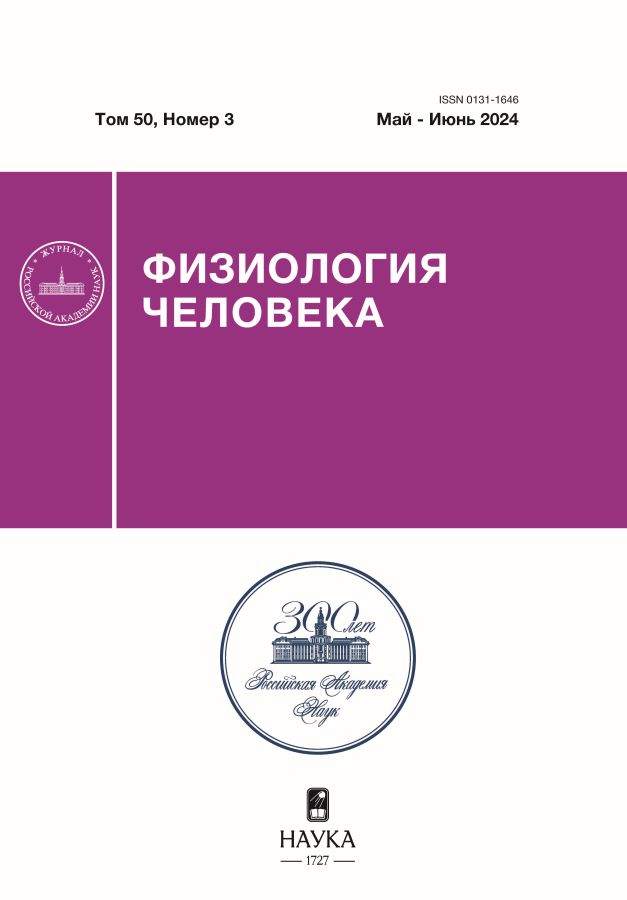Electroencephalographic features of alcohol use disorders with different decision-making efficiency in risk conditions
- 作者: Galkin S.А.1
-
隶属关系:
- Mental Health Research Institute, Tomsk National Research Medical Center, RAS
- 期: 卷 50, 编号 3 (2024)
- 页面: 56-62
- 栏目: Articles
- URL: https://rjonco.com/0131-1646/article/view/664012
- DOI: https://doi.org/10.31857/S0131164624030056
- EDN: https://elibrary.ru/BUNNJT
- ID: 664012
如何引用文章
详细
In order to identify the neurophysiological mechanisms underlying the violation of decision-making in risk conditions, we conducted a comparative analysis of spectral EEG indicators of patients with alcohol use disorders with different effectiveness of their decision-making in a number of cognitive tasks. As a result of the cluster analysis, two subgroups of patients were identified: with “moderate” and with “pronounced” decision-making deficit, which did not differ in socio–demographic and clinical indicators (p > 0.05). The subgroup of patients with a “pronounced” decision-making deficit differed statistically significantly lower values of the spectral power of θ- and α-rhythm in the central (p = 0.018 for θ-rhythm and p = 0.017 for α-rhythm), parietal (p = 0.031 for θ-rhythm and p = 0.014 for α-rhythm), occipital (p = 0.029 for θ-rhythm and p = 0.016 for α-rhythm) and temporal (p = 0.022 on the left and p = 0.043 on the right for α-rhythm) leads compared with patients with “moderate” decision-making deficit. Thus, in a subgroup of patients with a “pronounced” deficit of decision-making, a certain deficit of the brain’s inhibitory systems was noted.
全文:
作者简介
S. Galkin
Mental Health Research Institute, Tomsk National Research Medical Center, RAS
编辑信件的主要联系方式.
Email: s01091994@yandex.ru
俄罗斯联邦, Tomsk
参考
- Glantz M.D., Bharat C., Degenhardt L. et al. The epidemiology of alcohol use disorders cross-nationally: Findings from the World Mental Health Surveys // Addict. Behav. 2020. V. 102. P. 106128.
- Yen F.S., Wang S.I., Lin S.Y. et al. The impact of heavy alcohol consumption on cognitive impairment in young old and middle old persons // J. Transl. Med. 2022. V. 20. № 1. P. 155.
- Galkin S.A., Bokhan N.A. [Features of the reward-based decision-making in patients with alcohol use disorders] // Zh. Nevrol. Psikhiatr. Im. S.S. Korsakova. 2023. V. 123. № 2. P. 37.
- Peshkovskaya A.G., Galkin S.A., Bokhan N.А. [Cognition in alcohol dependence: Review of concepts, hypotheses and research methods] // Sibirskiy Psikhol. Zh. — Siberian J. Psychol. 2023. № 87. P. 138.
- Maksimova I.V. [Cognitive and electroencephalographic changes in patients with alcohol dependence who suffered a seizure] // Siberian Herald of Psychiatry and Addiction Psychiatry. 2018. № 2. P. 89.
- Arts N.J., Walvoort S.J., Kessels R.P. Korsakoff’s syndrome: A critical review // Neuropsychiatr. Dis. Treat. 2017. V. 13. P. 2875.
- Brevers D., Bechara A., Cleeremans A. et al. Impaired decision-making under risk in individuals with alcohol dependence // Alcohol. Clin. Exp. Res. 2014. V. 38. № 7. P. 1924.
- Galkin S.A., Bokhan N.A. [Disorders of cognitive decision-making mechanisms related to reward in alcohol use disorders] // Zh. Nevrol. Psikhiatr. Im. S.S. Korsakova. 2023. V. 123. № 4. P. 98.
- Brevers D., Cleeremans A., Goudriaan A.E. et al. Decision making under ambiguity but not under risk is related to problem gambling severity // Psychiatry Res. 2012. V. 200. № 2-3. P. 568.
- Levin I., Weller J., Pederson A., Harshman L. Age-related differences in adaptive decision-making: sensitivity to expected value in risky choice // Judgm. Decis. Mak. 2007. V. 2. № 4. P. 225.
- Bowden-Jones H., McPhillips M., Rogers R. et al. Risk-taking on tests sensitive to ventromedial prefrontal cortex dysfunction predicts early relapse in alcohol dependency: a pilot study // J. Neuropsychiatry Clin. Neurosci. 2005. V. 17. № 3. P. 417.
- Iznak A.F., Medvedeva T.I., Iznak E.V. et al. Disruption of neurocognitive decision-making mechanisms in depression // Human Physiology. 2016. V. 42. № 6. P. 598.
- Gomez P., Ratcliff R., Perea M. A model of the go/no–go task // J. Exp. Psychol. Gen. 2007. V. 3. № 3. P. 389.
- Lejuez C.W., Read J.P., Kahler C.W. et al. Evaluation of a behavioral measure of risk taking: the Balloon Analogue Risk Task (BART) // J. Exp. Psychol. Appl. 2002. V. 8. № 2. P. 75.
- Romeu R.J., Haines N., Ahn W.Y. et al. A computational model of the Cambridge gambling task with applications to substance use disorders // Drug Alcohol Depend. 2020. V. 206. P. 107711.
- Bull P.N., Tippett L.J., Addis D.R. Decision making in healthy participants on the Iowa Gambling Task: New insights from an operant approach // Front. Psychol. 2015. V. 6. P. 391.
- Iznak A.F., Iznak E.V., Medvedeva T.I. et al. Features of EEG spectral parameters in depressive patients with different efficiencies of decision-making // Human Physiology. 2018. V. 44. № 6. P. 627.
补充文件











